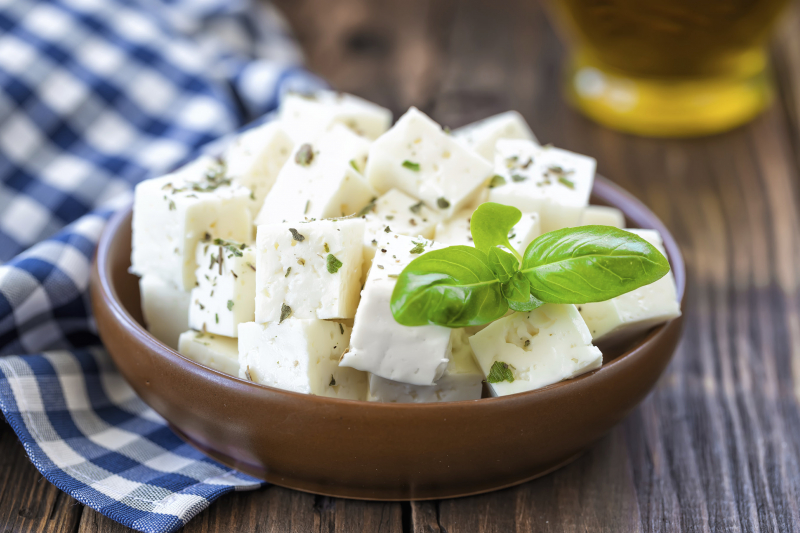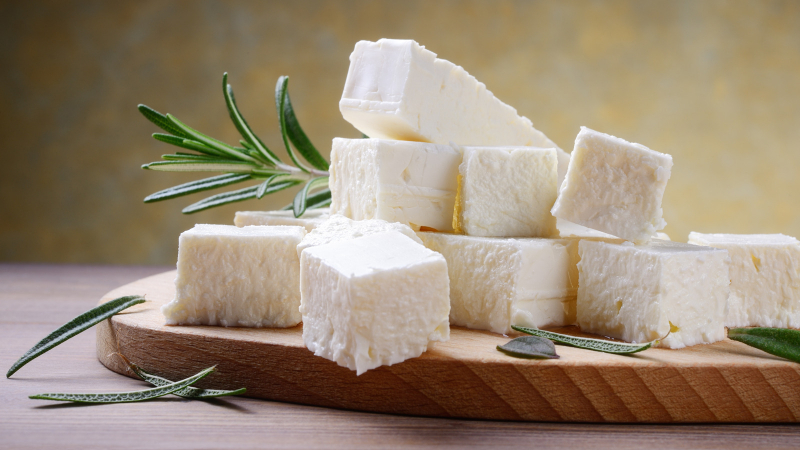Feta cheeses

Synonymous with Greece, Feta has become a staple in culinary cultures across the globe - both cooked and fresh. The flavors are mostly instilled from their foraging, giving in a texture and taste that differs depending on the locale. Feta's popularity has spawned several variations from other culinary cultures over the years, resulting in unique and delicious twists.
Taken together, these fresh cheeses, sometimes known as white cheeses, have salty and acidic flavors with crumbly, slightly creamy textures. Because they are preserved in brine, they have a distinct taste and aridity, akin to that of a dry wine. Some white cheeses are manufactured entirely of cow's milk, giving them a creamier taste and a springier texture.
Feta, which is still made in its homeland, takes its flavor from the regions surrounding central Greece. Other white cheese varieties, too, receive their flavor from local foods and environment. Each pasture has its own flavor and texture characteristics, making it unique to its location and country.
While white cheeses do not melt as well as other cheeses (such as Mozzarella or Gruyère), when baked, their flavors are substantially improved and softened. Pair any white cheese with fresh fruit and vegetables such as tomatoes, grapes and red bell pepper, adding rich drizzles of olive oil to garnish.











